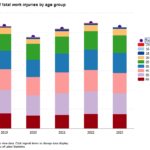A judge in Massachusetts has denied class certifications for claimants seeking payments from two insurers for the lost resale value of their motor vehicles that were damaged in accidents and then repaired.
Suffolk County Superior Court Justice Kenneth W. Salinger ruled that the damage and liability determinations being sought require individualized proof and cannot be addressed through class actions.
Plaintiffs Jarret McGilloway, Linda Estrella and Adam Ercolini sought class certifications for their claims against Safety Insurance Co. and the Commerce Insurance Co. The two insurers allowed plaintiffs’ claims for third-party collision damage and paid to repair their vehicles and restore them to their prior condition, but did not pay for alleged loss of resale value.
The plaintiffs contend that the insurers committed breaches of contract, and also engaged in an unfair business practices, by not paying every class member for lost resale value that their motor vehicle allegedly suffered after being damaged in a collision and then fully repaired.
The plaintiffs moved for class certifications on their claims for breach of contract and for violation of Chapter 93A, the state’s consumer protection law. They filed separate motions in each of these consolidated cases, seeking certification of one class with claims against Safety and a separate class with claims against Commerce.
The proposed class of plaintiffs with claims against Safety would have at least 26,000 members, while the class asserting claims against Commerce would have roughly 470,000 members.
The kind of loss that plaintiffs sought to recover is known as inherent diminished value or IDV. This term refers to “the concept that a vehicle’s fair market value may be less following a collision and repairs” and it equals the “difference between the resale market value of a motor vehicle immediately before a collision and the vehicle’s market value after a collision and subsequent repairs.”
Supreme Court Ruling
The class action move followed a 2018 Massachusetts Supreme Judicial Court (SJC) ruling that the standard Massachusetts automobile insurance policy required insurers to pay third-party collision damage claims for IDV to vehicles that are damaged and subsequently repaired.
However, as Superior Court Justice Salinger noted, the SJC stressed that the insurers should have to pay IDV only if the claimant establishes both that his or her vehicle suffered IDV, and the amount of IDV damages owed to him or her.
The SIC made clear it was not suggesting “that every automobile that is involved in a collision and is subsequently repaired has suffered an IDV,” explaining that “individualized proof is required to demonstrate that a given automobile has sustained some form of diminished value due to a collision or vehicular accident, even after repairs are made.”
With regard to the proposed classes, Justice Salinger found that a material dispute still exists regarding whether any of the plaintiffs’ vehicles have suffered IDV due to a collision and, if so, whether and in what amount such damage can be quantified. Each plaintiff has the burden of proof on these issues.
Regarding the rules governing class certifications, the Superior Court found that the proposed classes would satisfy some but not all of the requirements.
They would meet the requirements of numerosity, commonality, typicality, and adequacy of representation. As for numerosity, the proposed class of plaintiffs with claims against Safety would have at least 26,000 members, and the class with claims against Commerce would have roughly 470,000 members.
As for commonality and typicality, all putative class members would assert the same theories of liability and seek the same general kind of damages. And as for adequacy of representation, the interests of the named plaintiffs are aligned with those of the other putative class members, and plaintiff’s counsel is well qualified to conduct the litigation on behalf of the proposed class members.
That was the good news for the plaintiffs.
Missing Criteria
However, the judge continued, the proposed classes would not meet the requirements for predominance and superiority or the requirements under the consumer protections law (Chapter 93A), that class members have suffered similar injuries. The failure to show predominance and superiority also weighed against certifying classes as to the 93A claims, the judge added.
The court cited testimony by Commerce’s valuation expert that determining whether a vehicle’s resale market value is less than it would have been immediately before the collision “requires detailed and individualized analysis of many factors, including the nature and severity of the damage and the quality of the repairs’ whether the vehicle had a prior accident history; in what manner the vehicle is to be sold after being repaired (e.g., private sale, retail sale, trade-in); the general class of vehicle (e.g. inexpensive sedans, minivans, high- end luxury vehicles, etc.); and the market segment of buyer involved in any subsequent sale.”
There was also testimony that many vehicles that are damaged in a collision and then are fully repaired do not suffer any IDV, but instead are worth just as much and sometimes even more after being repaired than they were worth before the collision.
Plaintiffs themselves conceded during oral argument that many class members may not have suffered IDV.
The judge did not favor plaintiffs testimony that IDV damages can be determined using nothing but a standard vehicle valuation guide (like the one published by the National Automobile Dealers Association) and the damage appraisal report for each vehicle. But, the judge added, even if each IDV analysis could be much simpler than the Commerce expert testified, that would not change the fact that “liability cannot be determined on a class-wide basis and instead would have to be decided individually for the tens of thousands or hundreds of thousands of members of each proposed class.”
‘Individualized Proof’
The court found that “individualized proof, analysis, and findings would be required to determine whether any putative class member’s vehicle suffered some amount” of IDV and, if so, how much.
The court said the evidence confirmed what the SJC in its 2018 ruling.
“Because the issue of liability requires individualized proof and cannot be decided on a class wide basis, the Court finds and concludes that common issues do not predominate over individual ones, a class action is not superior to individual adjudication of claims, and denial of class certification is therefore appropriate,” the judge wrote.
Similarly, class certification is inappropriate under Chapter 93A for the further reason that not all class members were subjected to similar unfair or deceptive conduct and suffered similar injuries. Thus, class certification under 93A is also not appropriate.
Plaintiffs further argued that the issue of which class members suffered injury in the form of uncompensated IDV raises only a question of damages that can be address later on, and should not preclude class certification.
The court disagreed. “There is a difference between determining the extent of harm (the question of damages) and deciding whether there was any harm at all (which goes to liability). While obstacles to calculating damages may not preclude class certification, the putative class must first demonstrate economic; loss on a common basis,” the judge explained.
There is no liability for breaching a contract, like an insurance policy, if the alleged wrongdoing did not cause damages. A business or consumer is not entitled to collect even nominal damages under 93A without proving that the violation caused some sort of “separate” and “distinct” injury.
The need in this case for an individualized inquiry to resolve such issues would involve much more than “merely a question of damages,” and makes it appropriate to deny class certification, the court stated.
This article was originally published by Insurance Journal. Reporter Andrew Simpson is a freelance writer and editor. He retired as Chief Content Officer for Wells Media Group in July, 2022 after 18 years with the company.





















 Dear Elon and Vivek: Insurance Commissioners Urge DOGE to Ditch FIO
Dear Elon and Vivek: Insurance Commissioners Urge DOGE to Ditch FIO  Property and Casualty Insurance Trends for 2025
Property and Casualty Insurance Trends for 2025  U.S. Labor Agency Releases Final 2023 Injury, Fatality Stats
U.S. Labor Agency Releases Final 2023 Injury, Fatality Stats  California Insurers Required to Increase Home Coverage in High Risk Wildfire Areas
California Insurers Required to Increase Home Coverage in High Risk Wildfire Areas 



